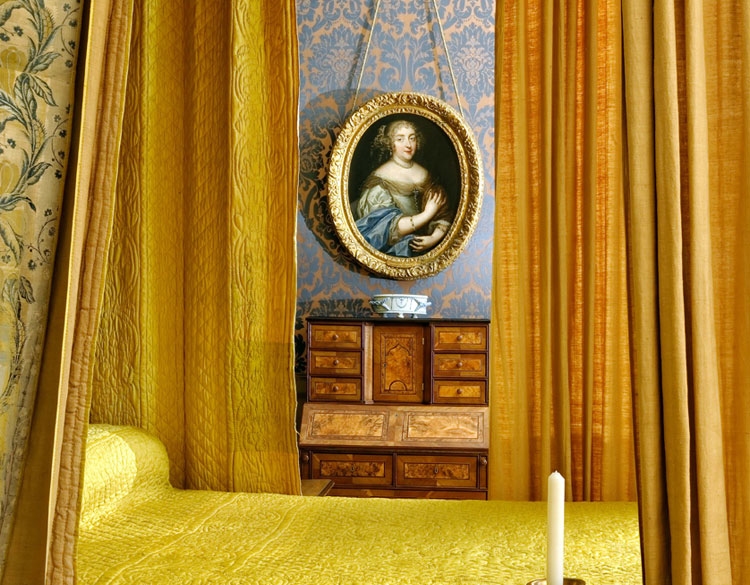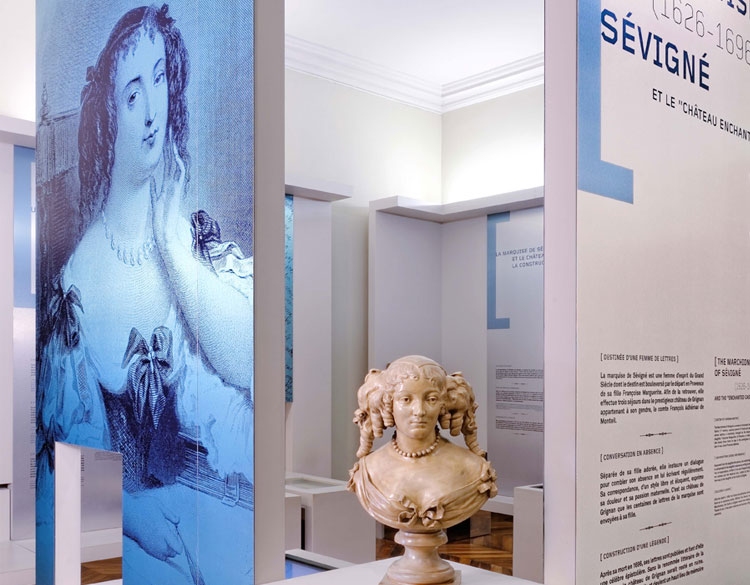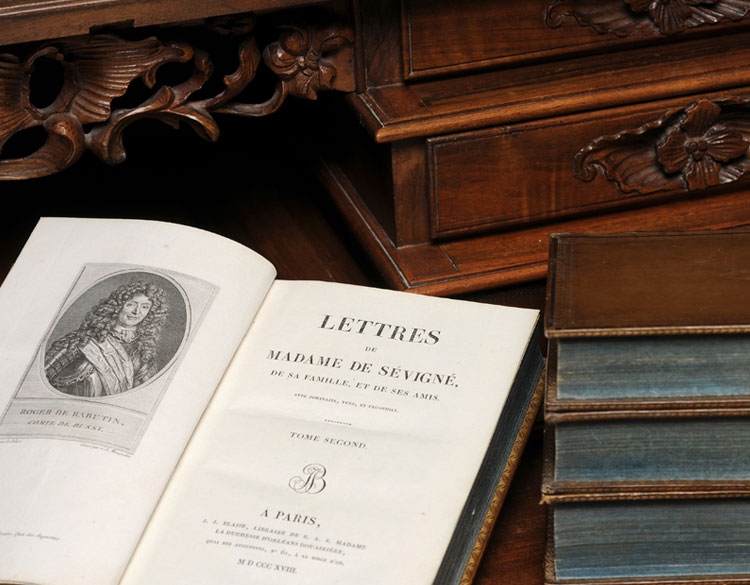Escale à Grignan
Secret de Musée a fait étape à Grignan, le temps de s'imprégner de l'histoire de la Marquise et du délicieux parfum des lavandes.
Secret de Musée a fait étape à Grignan, le temps de s'imprégner de l'histoire de la Marquise et du délicieux parfum des lavandes.
Marie de Rabutin-Chantal was born on 5th February 1626 at Place Royale, the Marais, in Paris. Orphan at seven, she was brought up by her uncle, Philippe II de Coulanges. She received a free and modern education, read contemporary authors and shaped her mind through the practice of conversation. At 18, Marie de Rabutin married Henri de Sévigné, from a well-to-do family in Brittany. From this marriage, two children were born, Françoise-Marguerite and Charles. Her husband died in a duel in 1651. Madame de Sévigné settled in Paris and moved in society circles where she was appreciated for her beauty and her intellect. With her daughter Françoise-Marguerite, she was invited to Versailles.
In 1669, her daughter married François Adhémar, Count of Grignan. They all lived in the same private mansion in the Marais until the day when the Count, made Lieutenant-General for the King in Provence, left Paris. Saddened by this separation, Madame de Sévigné, on 6th February 1671, wrote her first letter to her daughter, two days after her departure to join her husband living in Aix and later in Grignan.
She corresponded with her two or three times a week. Out of that wrench was to be born the Marchioness' famous and brilliant correspondence. After moving to the Hôtel Carnavalet in Paris in 1677, she travelled regularly to see her estates, family or friends. She stayed in Brittany at the château des Rochers, in Livry at her uncle's abbey, her uncle being the Abbot of Coulanges, in Burgundy at the château de Bourbilly and in Provence to meet up with her daughter. Madame de Sévigné stayed at the château of Grignan three times and a total of four years: the first between July 1672 and October 1673; the second between October 1690 and December 1691; the third between May 1694 and April 1696. She shared the Grignans' family and social life and discovered Provence. She died on 17th April 1696 in the château of Grignan; she was buried in the Adhémars' vault in St. Sauveur's collegiate church. Françoise-Marguerite had three children including Pauline, future Marchioness of Simiane, who was going to play an important role in the publication of her grandmother's correspondence.
read more


From ordinary banter to profound reflections, Madame de Sévigné's correspondence appears like the chronicles of a seventeenth-century family and society. It was to make her one of the most famous letter writers in French literature. Never published during her lifetime, her first letters were discovered after her death in her cousin Roger de Bussy-Rabutin's Memoirs and Letters. They were later published without the family's permission, then, in 1734, by a publisher from Aix with the consent of her granddaughter Pauline de Simiane. Thanks to the publication of her letters, Madame de Sévigné was recognized as early as the 18th century as a great author, first in France, then in England. Writers, artists, scholars had a passion for her literary work and travelled in her steps. They were attracted to Grignan, a real memorial place: the château, the collegiate church, the cave of Rochecourbière… The travellers, with a keen interest in "noble mementoes" and heritage, were seduced by the château, even though in ruins. Although Madame de Sévigné only stayed three times in Grignan, she has left a deep impression on the place. It was thanks to her that the various owners began the restoration of the edifice. The Marchioness of Sévigné's spirit and memory remain forever attached to the place.
